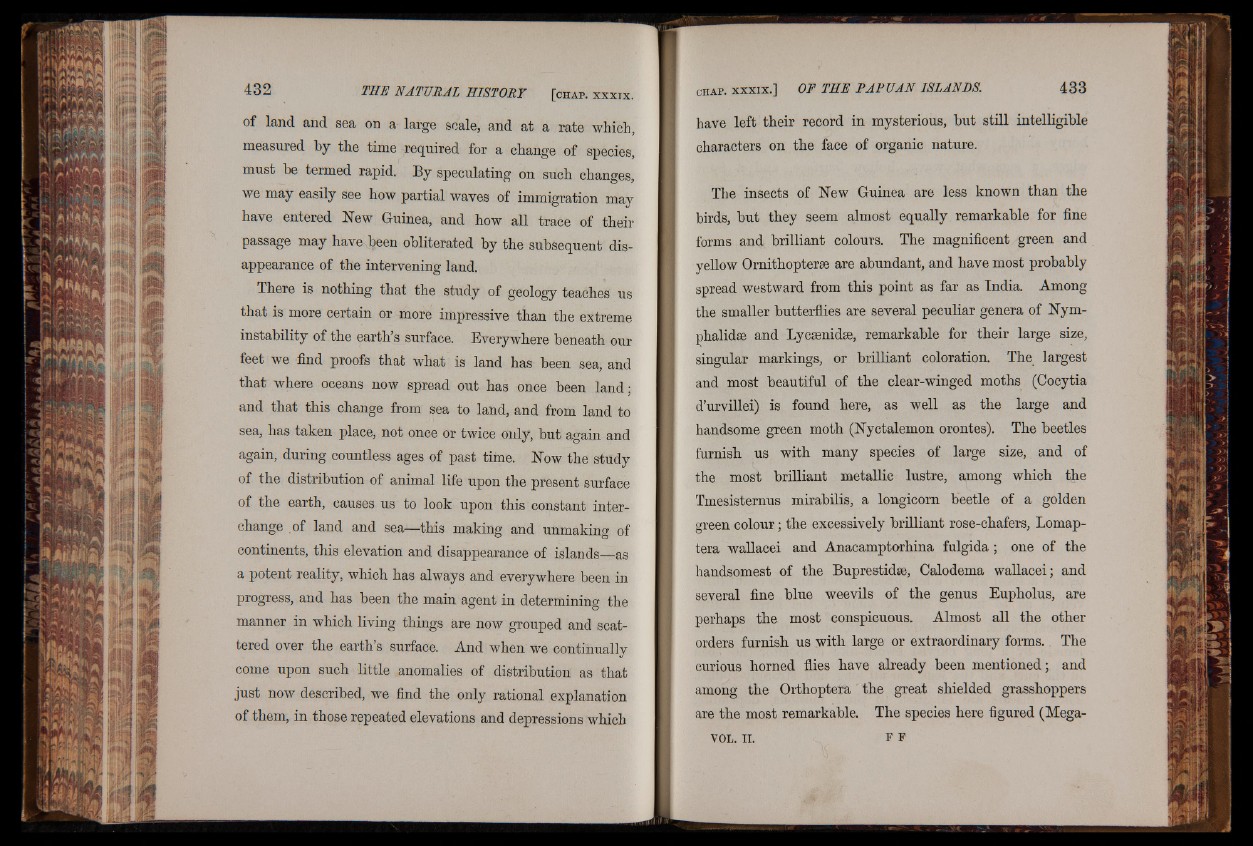
of land and sea on a large scale, and at a rate which,
measured by the time required for a change of species,
must be termed rapid. By speculating on such changes,
we may easily see how partial waves of immigration may
have entered New Guinea, and how all trace of their
passage may have been obliterated by the subsequent disappearance
of the intervening land.
There is nothing that the study of geology teaches us
that is more certain or more impressive than the extreme
instability of the earth’s surface. Everywhere beneath our
feet we find proofs that what is land has been sea, and
that where oceans now spread out has once been land;
and that this change from sea to land, and from land to
sea, has taken place, not once or twice only, but again and
again, during countless ages of past time. Now the study
of the distribution of animal life upon the present surface
of the earth, causes us to look upon this constant interchange
of land and sea—this making and unmaking of
continents, this elevation and disappearance of islands—as
a potent reality, which has always and everywhere been in
progress, and has been the main aug ent in determiningO' the
manner in which living things áre now grouped and scattered
over the earth’s surface. And when we continually
come upon such little anomalies of distribution as that
just now described, we find the only rational explanation
of them, in those repeated elevations and depressions which
have left their record in mysterious, but still intelligible
characters on the face of organic nature.
The insects of New Guinea are less known than the
birds, but they seem almost equally remarkable for fine
forms and brilliant colours. The magnificent green and
yellow Ornithopterse are abundant, and have most probably
spread westward from this point as far as India. Among
the smaller butterflies are several peculiar genera of Nym-
phalidae and Lycsenidse, remarkable for their large size,
singular markings, or brilliant coloration. The largest
and most beautiful of the clear-winged moths (Cocytia
d’urvillei) is found here, as well as the large and
handsome green moth (Nyctalemon orontes). The beetles
furnish us with many species of large size, and of
the most brilliant metallic lustre, among which the
Tmesisternus mirabilis, a longicorn beetle of a golden
green colour; the excessively brilliant rose-chafers, Lomap-
tera wallacei and Anacamptorhina fulgida; one of the
handsomest of the Buprestidse, Calodema wallacei; and
several fine blue weevils of the genus Eupholus, are
perhaps the most conspicuous. Almost all the other
orders furnish us with large or extraordinary forms. The
curious horned flies have already been mentioned; and
among the Orthoptera the great shielded grasshoppers
are the most remarkable. The species here figured (Mega-
VOL. II. f p